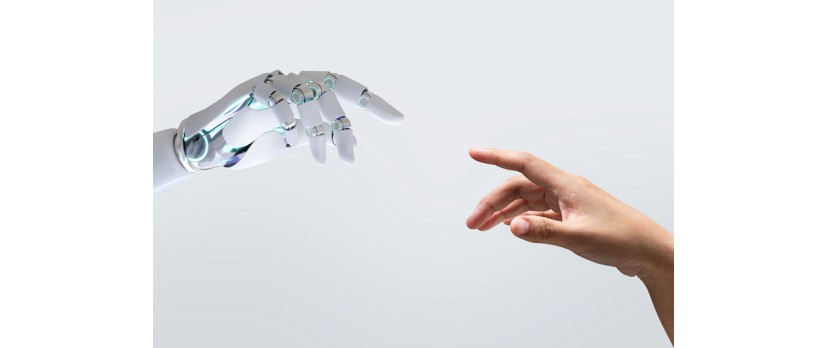Walk into a bustling store, and you’ll notice more than price tags and displays there’s an invisible net at work. As retail crime grows more audacious and customer expectations for safety rise, businesses across the sector are turning to technology for protection. Security no longer relies purely on analog cameras or staff vigilance; artificial intelligence is stepping into the spotlight, transforming the landscape of retail defense.
Today’s security solutions go beyond simply watching and recording. AI-powered systems act as vigilant sentinels, reacting in real-time to suspicious activity, predicting risk, and empowering teams to respond in ways humans alone never could. This article delves into how retailers from small boutiques to sprawling big-box stores are embracing these advances. We will uncover how AI reshapes store safety, deters would-be criminals, and, ultimately, helps foster an environment where every shopper and staff member can breathe just a little easier.
AI Security Systems: The New Standard in Retail
Retail environments present a unique blend of constant motion, complex layouts, and endless merchandise conditions that are a playground for theft and fraud. Traditional approaches, based on rows of cameras passively recording footage, often put retailers in a position of reacting after the fact. But AI-based systems are shifting the paradigm by providing proactive protection that can rival the best shop detective or eagle-eyed manager.
These platforms draw from a mix of high-definition video, behavioral analytics, and machine learning models trained to recognize genuine risks. Instead of sifting through endless hours of blurry footage, managers receive real-time alerts, giving them the chance to intervene before an incident escalates. As funding pours into new solutions, a startup-led camera intelligence boom is making it feasible for even mid-tier chains to deploy predictive video analytics at scale.
Retailers are also finding that AI helps meet modern expectations for privacy. Smart zoning and facial detection can ensure sensitive data isn’t misused, and only relevant incidents are flagged. In bustling shopping centers, where a missed moment can mean big losses, the transition to AI-powered surveillance is starting to feel as inevitable as self-checkout kiosks once did.
Real-Time Monitoring and Deterrence: How It Works
Step behind the scenes, and you’ll find a nerve center that hums much like an air traffic control tower. Central to today’s top systems such as those utilizing business security system with live monitoring is the ability to fuse live video feeds with instant analysis, connecting physical store spaces with offsite security professionals who can respond as events unfold.
Imagine, late at night, as an individual lingers outside an emergency exit. AI-driven software evaluates every move, matching patterns against a vast database of typical and atypical behaviors. If a threshold is crossed say, someone tries to pry open a door an alert flashes instantly to human monitors who can intervene through speakers, notify police, or trigger lockdown protocols. The speed and accuracy often mean incidents are stopped before a loss occurs. Sam’s Club is already beta-testing cart-scanning exits at Sam’s Club that verify purchases in seconds, illustrating how vision AI can streamline security without stalling customers.
Retailers share stories of how these systems not only spot would-be thieves but also deter mischief just by their reputation. In many cases, the knowledge that an AI-based security system watches every angle and that live professionals are ready to act makes many opportunists think twice. It’s as if every store, from pharmacy corners to electronics aisles, has a silent guardian watching with a tireless, discerning eye.
Case Studies: Success Stories in the Aisles
Consider a midsize electronics retailer grappling with coordinated “grab and go” theft. Implementation of AI-driven video analytics with smart incident response produced dramatic changes. Within weeks, staff noticed an astonishing drop in attempted thefts. In one instance, AI flagged a group who’d split up to confuse employees before anyone could react, the system had already alerted staff and security intervened decisively. Loss prevention rates improved, and staff morale soared knowing they had reliable backup.
The Wall Street Journal notes that while retailers grapple with shrink reality, chains that pair AI alerts with trained responders are outperforming peers still relying on manual review. Closer to home, the San Francisco Chronicle reports how Oakland hardware cuts theft with software, halving incidents by flagging swipe gestures instead of faces.
Another striking example comes from a national chain dealing with persistent after-hours break-ins. With a combination of live-monitored surveillance and AI threat assessments, incidents dropped to near zero over a quarter. Insurance claims decreased, and word spread quickly among store teams about how the technology made everyone feel safer walking to their cars at night.
It isn’t just about catching bad actors in the act. One convenience chain found the system crucial for quickly verifying and responding to slips and accidents, demonstrating care for shoppers and protecting the business from costly, time-consuming claims. Real-world results show that leveraging these systems can shift an entire store’s atmosphere from anxious to assured.
The Human Element in AI Security
Diving deeper, you’ll find that successful systems keep people in the loop without overburdening them. Staff no longer have to watch monitors all shift long or second-guess the intentions of every customer. Instead, they’re free to focus on service, while remote professionals respond to the alerts that really matter.
Fast Company argues that empowering frontline staff with analytics creates a virtuous loop where employees trust the system because it frees them to focus on service. In interviews, store managers express newfound confidence security now feels more collaborative and less like an adversarial game of cat and mouse. Employees know the system “has their back,” and even shoppers remark on the less obvious, but ever-present, sense of security that helps everyone relax.
Reducing Shrinkage and Improving the Shopping Experience
Shrinkage those cumulative losses from theft, errors, and mishaps remains a nagging challenge for all retailers. Yet AI-powered security isn’t just about plugging leaks. When risks are quickly identified and handled, inventory accuracy improves, margins are safeguarded, and customers benefit from better-stocked shelves and faster service. Forbes recently profiled how retailers are reshaping shrink mitigation with AI, reporting double-digit drops in loss after swapping random audits for machine-learning alerts. For retailers who once viewed shrink as an unavoidable cost, case studies show that adopting new monitoring systems can literally pay for itself.
One often-overlooked benefit is how AI can create a more inviting, less intrusive environment for customers. No longer are shoppers intensely scrutinized by staff or treated with suspicion; the reputation of real-time, smart monitoring acts as a powerful deterrent on its own. The net effect is a place where honest customers feel valued, and those with malicious intent are, quite simply, outmatched.
Retailers increasingly recognize that investing in sophisticated security boosts their reputations, not just their bottom lines. Store environments become more comfortable for employees and visitors alike, with safety so seamlessly integrated that it feels like it was always meant to be part of the retail experience.
Upgrading Security Infrastructure: Actionable Steps
For retailers considering this leap, the journey starts with a real assessment of risk and objectives not every store needs a military-grade system, but every location deserves an approach fit for its unique profile. Leaders should measure the impact of shrinkage, analyze customer expectations, and connect with solution providers who specialize in their sector.
Implementation is most successful when businesses focus on systems that combine advanced analytics with a human touch. Key questions include: What are the most vulnerable areas in our operations? How do we balance safety with privacy and customer trust? What measurable improvements can we expect, and how will the system scale as our needs grow?
Modern security isn’t a one-size-fits-all solution; it’s a layered, adaptive shield. Launching a pilot program, training teams on the new protocols, and getting buy-in across the business are essential for lasting results. The next generation of retail security demands both vision and diligence leaders who act now find themselves not only better protected but better positioned for whatever threats tomorrow may bring.
Conclusion
Retail crime will always evolve, but the best defenses grow alongside the threat. The shift from legacy cameras and passive response to AI-driven, live-monitored solutions represents more than a technological upgrade it’s a fundamental change in how retailers protect what matters most. With cases showing reduced shrinkage, greater peace of mind, and storefronts transformed into zones of real safety, it’s clear that AI has a pivotal role to play.
Adopting these advancements isn’t just about surveillance; it’s about creating retail spaces where employees and customers alike experience trust and confidence. For stores ready to prioritize both security and experience, AI-powered systems are quickly becoming the quiet hero in the aisles and the unseen edge in the face of rising risk.


Login and write down your comment.
Login my OpenCart Account